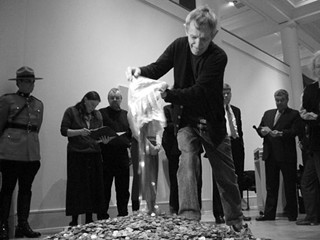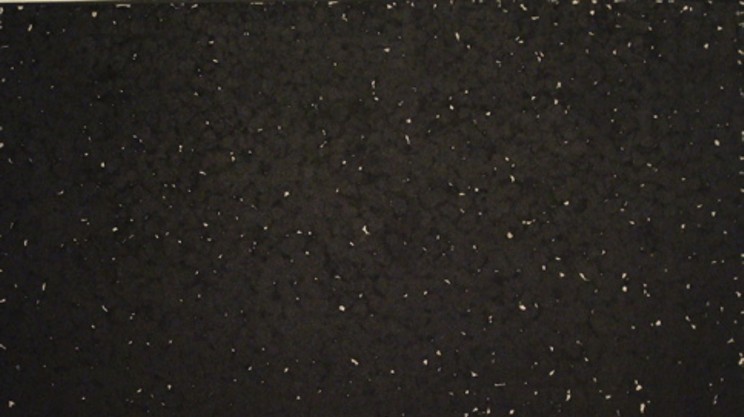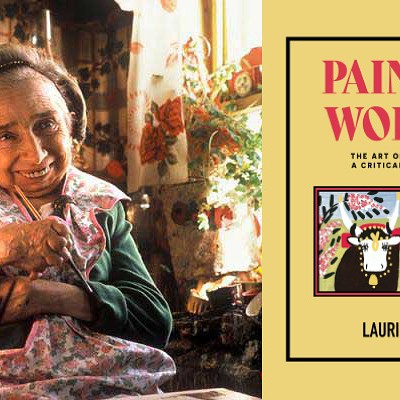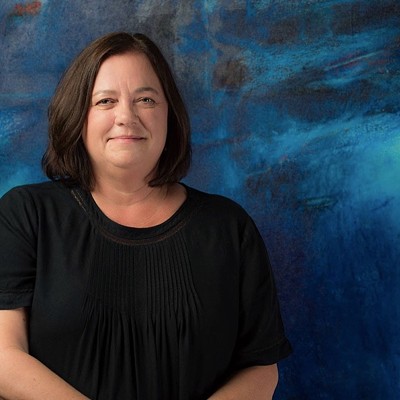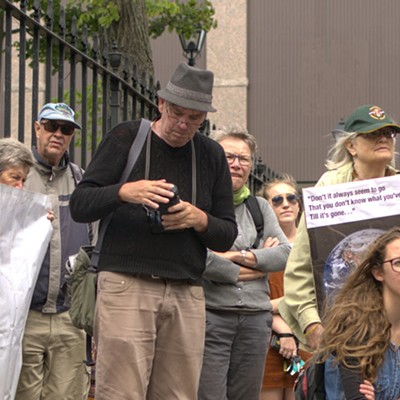New York-based conceptual painter and sculptor Rachel Beach manages to get one sentence in before choking up.
"In terms of being influential on students that then go out into the world and have a certain idea about how art gets made," she says, "there's no other influence that's had any single larger effect than the way that man taught me to think about art."
So was the enigma and legend of Gerald Ferguson, who died late last week at the age of 72. It's a loss that's still raw and unimaginable for the local arts community, but also a loss being mourned across the country and abroad.
Like the process that left impressions on canvas in his still-touring Frottage Works 1994-2006 series, so too did Ferguson leave lasting impressions on contemporary art. With a life-long studio practice and a teaching tenure at NSCAD starting in 1968 and stretching almost 40 years, Ferguson's impact is incalculable.
"It's important for any Maritimer to know how highly he was thought of across the country," says Toronto lawyer-turned-art- consultant Steve Smart. Not only does every reputable corporate collection have at least one of Ferguson's works, but they're always displayed prominently on the reception floor. And prominent art stars like Micah Lexier unabashedly regard a Ferguson piece as their "favourite works in Canadian art history."
Ferguson's importance is international too. Right now his work is on display in New York at both the Museum of Modern Art and the Whitney Museum of American Art.
And yet, as an artist, Ferguson never really had international representation. Not because his work was lacking, but because he wouldn't jump through art world hoops, schmooze and be a lapdog. Instead Ferguson made his mark as "an activator, energizer and catalyst. An impresario might make him sound too dilettante-ish. But he made things happen," says former student and fellow NSCAD professor Jayne Wark.
Along with then-NSCAD president Garry Neill Kennedy, in the 1970s, Ferguson turned Halifax into an unlikely art mecca. He was the man behind the curtain for a number of the school's groundbreaking initiatives including art history. He also generated dialogue and interest in Nova Scotian folk art through his own collection and interest.
"Jerry Ferguson was the mind that pushed things," remembers former co-worker Eric Cameron from his office in Calgary. "His art and his contribution to the world of art is something that has had a lasting significance. And that significance needs to be trumpeted from the rooftops."
Ferguson's drive was tough for anyone to match, but that didn't mean you he didn't expect you to. Long-time friend and president of the Royal Canadian Academy of Arts, Jeffrey Spalding, remembers first meeting him as student in 1972 and thinking of him as mix of a Marine drill sergeant and stoic monk.
"He was a very serious purposeful fellow with unbelievably intense eyes, and when he looked at you there was no where to run," says Spalding.
While distancing himself between personal expression or romanticism in his art and criticism, his remarkable passion squeezed through that barrier. It wasn't just beauty that came in through this back door (as Ferguson was known to say), but also love---a love of art that resonated in every deep-cutting comment or pined-for compliment.
"He was a master at imparting essential skills while introducing students to the idea of becoming an artist," writes Garry Neill Kennedy. "For that's what Jerry was, first and foremost---an artist."
And as an artist, Ferguson embodied the NSCAD motto---heart, head and hand. It's an ironic trio given his desire to omit the hand of the dandy painter in his work. But his hands shaped the ideals of many students turned teachers at NSCAD and in faculties abroad, and so it's an irony perhaps he could appreciate and can comfort the art world he left behind.

